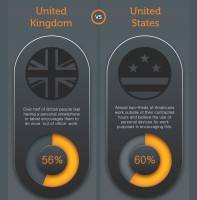June 27, 2013
Under a quarter of US staff enjoy optimal working environment, claims report
 Architecture firm Gensler has released the results of its 2013 US Workplace Survey. The report claims that under a quarter (24 percent) of US workers work in an optimised working environment with the remainder suffering from unnecessary lost productivity and a lack of innovation and engagement. The survey of more than 2,000 knowledge workers from across the US examined specific design factors across four work modes defined by Gensler: focus, collaboration, learning and socialising. The report concludes that the modern workplace has a number of new and increasingly important drivers including new technology, globalisation, generation Y and so on which define where, when and how workers perform their jobs and concludes that the ability to balance focus and collaboration with strategic workplace design is essential.
Architecture firm Gensler has released the results of its 2013 US Workplace Survey. The report claims that under a quarter (24 percent) of US workers work in an optimised working environment with the remainder suffering from unnecessary lost productivity and a lack of innovation and engagement. The survey of more than 2,000 knowledge workers from across the US examined specific design factors across four work modes defined by Gensler: focus, collaboration, learning and socialising. The report concludes that the modern workplace has a number of new and increasingly important drivers including new technology, globalisation, generation Y and so on which define where, when and how workers perform their jobs and concludes that the ability to balance focus and collaboration with strategic workplace design is essential.

















July 2, 2013
Younger workers’ CSR ethics don’t necessarily extend to older generation
by Sara Bean • Comment, Legal news, News, Workplace
Is ageism one of the last bastions of accepted prejudice in the UK? Take the Daily Mail’s “night of the living dead” coverage of the Stones’ Glastonbury performance – deemed acceptable where jokes regarding gender, race or disability are not. A new survey illustrates this attitude. Nearly half of younger workers in a recent poll think older colleagues are in danger of stifling their career prospects by retiring later, that their prolonged presence could damage productivity and that they have very little to teach the younger generation. Yet over half (55 per cent) of Generation Y workers questioned in the poll say the ethical credentials of a company would influence their choice of employer. Since the scrapping of the Default Retirement Age (DRA) the number of over-65s in the labour force has exceeded one million, and the survey, carried out for KPMG by OnePoll warns that tensions could rise as the need for employees to stay in the labour force for longer growing due to social and financial pressures. (more…)